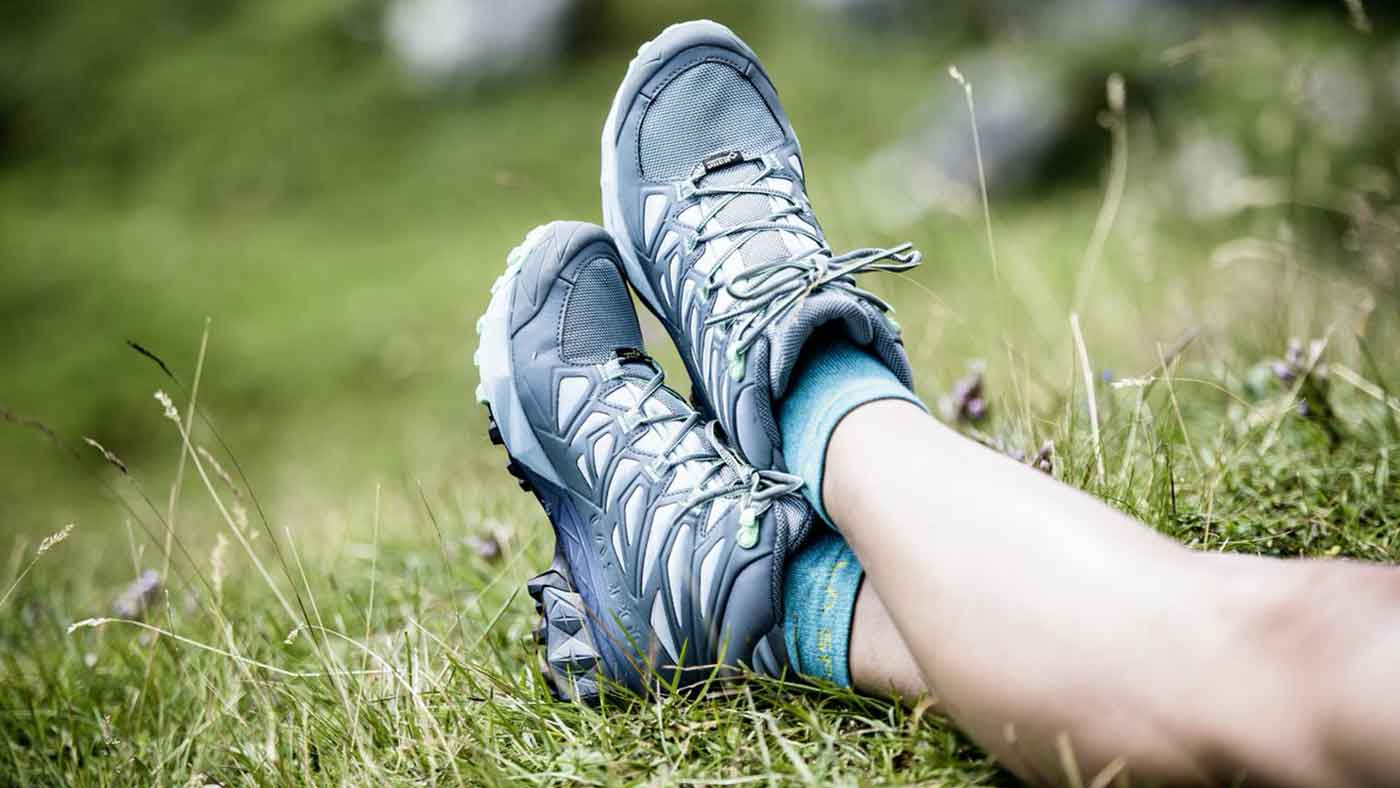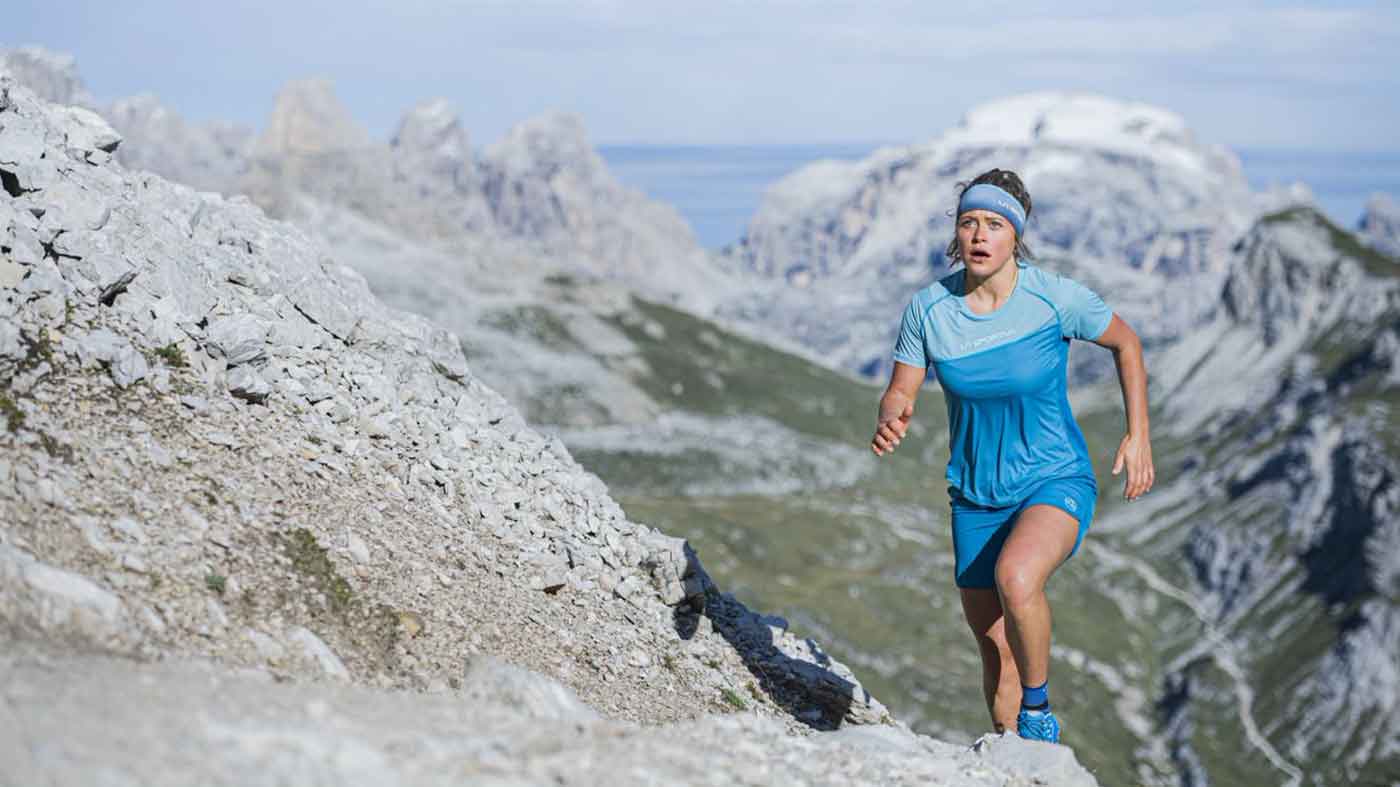Hiking Foot Care & Blister Prevention

You demand a lot of your feet when on outdoor adventures – whether that be on a thru hike or a weekend trail run, and alpine climb or a bushwalk, which is why we need to make sure we look after them properly. The rigors of the outdoors can leave our feet susceptible to blisters, fatigue, the cold and even foot rot! Fortunately, there are various methods to prevent these nasties from ruining our adventures.
Comfortable and blister free feet while hiking or trail running start with the best fitting boots or shoes for you. But even the best footwear does not guarantee you to be blister free, so many other factors can contribute to blisters including moisture, temperature, terrain, length of hike, dirty feet or socks, and your foot skin condition. So in this article we will start from the outside and work our way in, covering shoes, footbeds, socks, blister prevention products and treatment.
Hiking Shoe Care
While it’s all good and to be thinking about looking after your feet, your shoes mustn’t be neglected! Taking care of your shoes is the first step to taking care of your feet. To stop blisters before they start and regulate the temperature you want to keep your feet as dry as possible. Most hiking boots contain a waterproof-breathable membrane of some sort (usually Gore-Tex) to stop water getting in, whilst still “breathing” and letting sweat and internal moisture out. This membrane may deteriorate over time due to sun exposure or water saturation. You will first notice this as water appearing to be absorbed by the boot, instead of beading and rolling off the surface as it normally would. This not only is bad for letting moisture in but also limits the breathability of the boot as sweat finds it hard to leave a soaked boot. Not to fear! A simple reapplication of waterproofing will do the trick. These are usually in the form of a spray/roll-on, applied directly to the boot. After leaving to dry, the original quality of waterproofing and breathability should be restored. Also keeping your boots clean inside and out will not only aid the breathability of the boot, but also the longevity of your boots – it’s a win win!
E.g. Nikwax nubuck and suede proof
Also to note is correctly tensioning your laces. So simple but so important. It seems silly, but so many blisters can be prevented by simply re-tensioning your boot or shoe laces as soon as you notice your foot is not holding as well as it normally does and you can feel friction.

Insoles
Usually, the insoles that come with shoes will suffice, but if you suffer from overpronation, this may call for some additional support. Also, if you know that you are susceptible to blisters on the soles of your feet, having a more contoured insole to lock in your foot so that it doesn’t slide around as much can do just the trick.
Superfeet Insoles come in different foot volumes and arch sizes, catering to your needs. Essentially, they adapt the shoe to your foot, making it feel like the perfect mould. This offers additional stability and comfort which helps to prevent injury and reduce fatigue. The range also comes in most width and shoe sizes, which means you can simply trim the insole to fit your exact shoe last.

Socks
Socks are an often-overlooked aspect of any outdoor adventure, but they are key to keeping your feet comfortable and blister-free. The sock’s job is not only for cushioning but also to suck sweat away from your foot and outward toward your boot – this is called wicking. Good quality socks are great at doing this. However, once a sock becomes dirty, full of dead skin, oil, dirt and gunk the movement of moisture becomes next to nothing. This holds the moisture next to the skin which is not good for skin health as it can make it weak over time. Also in cold environments it is not good for insulating so even with a thick sock your feet can get cold. So, on long multiday hikes make sure you change your socks regularly and wash them. Socks also reduce friction between your foot and the boot, if your sock is full of sand or dirt it can act like sandpaper against the skin. So again, keep your socks clean.
In cold environments, blood is often directed away from extremities to circulate more thoroughly around the core regions, increasing the likelihood of getting cold fingers and toes. In order to keep your toes as warm as possible, it is worth considering the sock layering system, just as you would with your hands. It is generally a good idea to use merino sock liners combined with a thicker pair (also merino). Merino wool is a natural thermoregulator meaning that it will keep you cool when it’s hot but also keep you warm when it’s cold. It also has antimicrobial properties which means they won’t smell as much, even after a few days of wearing! The double layering also helps to prevent blisters as the additional layer protects the foot from friction against the boot.
When not in a cold environment, just a single pair will do the trick. The main difference between the massive range of socks available are the percentages of materials. These could include merino wool, new wool (sheep), nylon, polyester, acrylic, etc. What you choose will depend on what activity you plan on doing. Merino wool and standard new wool are by far the best all-rounders. The main difference between them is that merino tends to be a little more delicate whereas some people may find wool a little scratchier. Socks also vary in densities, so naturally the thicker ones will be more suitable to colder environments. An example of this is the Bridgedale range which have socks suitable for the Australian summer to use in the Nepali winter.
E.g. Bridgedale summits, Bridgedale trekkers, Smartwool hiking liners, Icebreaker Hike+

Blisters
It’s often the little things that can put an end to a trip. Blisters are caused by friction and can sometimes come on very quick if the skin quality on your feet is poor. The result is a small painful bubble of fluid forming between two layers of skin. Putting pressure on the blister is usually pretty painful and if not taken care of, the blister can burst and become infected. While there are ways to treat blisters such as Moleskin/gel dressings, it is much better to prevent it in the first place.
One of the most effective ways to do this is using blister wool. When you feel a hot spot coming on, simply pluck a strip of wool from the packet and place between your foot and the sock. It will bond to the sock, so won’t slide around as you’re walking. This pretty much stops the blister dead in its tracks and has been tried and tested by many of our staff! The wool also contains lanolin (sheep oil), which is a natural remedy for skin conditions.
E.g. Acti-Bliss blister prevention wool
If you are unfortunate enough to get a blister, even after all this advice, make sure you keep it clean and cushioned. Moleskin, 2nd Skin or at the very least Band-Aids will help. Having something physically stuck on the blister will stop further rubbing on it, the padding will sooth it and the dressing will help keep out dirt and grime. On multiday hikes and adventures make sure you change the dressings regularly and clean the blister every time.

On a long outdoor adventure, whether that’s hiking, mountaineering, trail running or whatever, your feet can make or break you trip. So make sure you make it! Good foot health is about good skin quality, friction prevention, temperature and moisture regulation. It’s about getting the best gear for your feet and activity, but also about maintenance along the way. So learn from advice and from your mistakes and make sure you don’t neglect your feet on the trail.
By: Stephanie Ho

